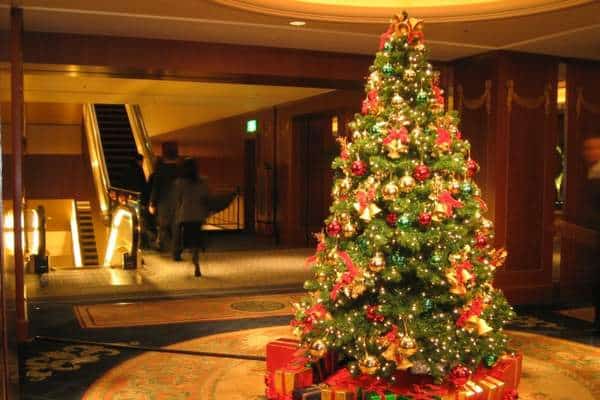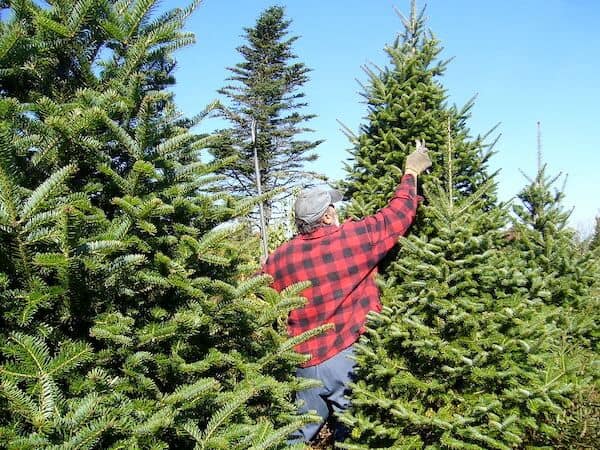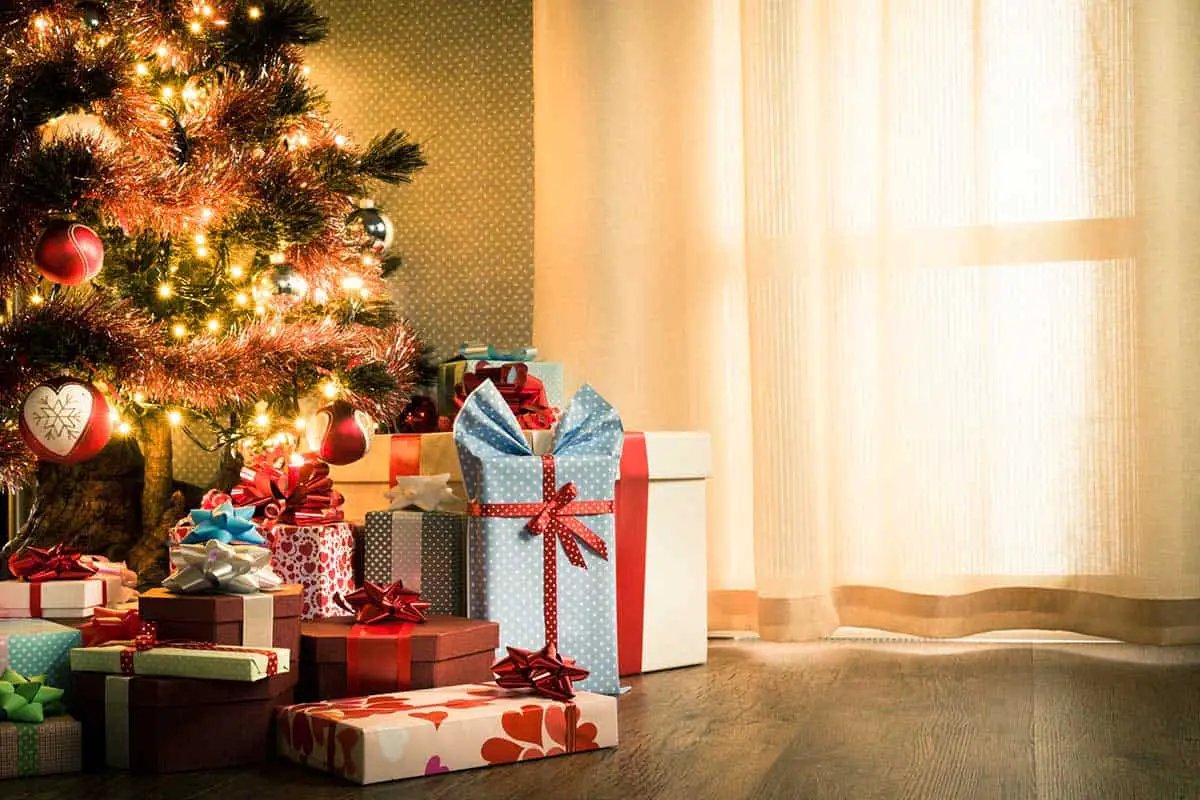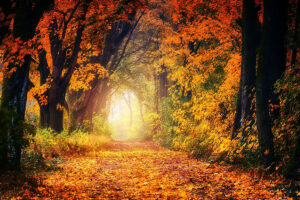This page may contain affiliate links. If you click and buy, we might get a small commission at no cost to you.
Christmas trees are one of the most beloved symbols of the holidays. From their lush, evergreen branches to their twinkling ornaments, these festive trees bring joy and cheer to any home.
But do they need sunlight to stay healthy and vibrant? The answer may surprise you! While Christmas trees don’t require sunlight to survive, they do benefit from a few hours of direct sunlight daily.
This helps them to stay green, full, and vibrant throughout the holiday season. Read on to learn more about how sun exposure can help your Christmas tree look its best this holiday season!
Key points
- Cut Christmas trees should be kept out of direct sunlight to prevent drying out
- Before cut, all evergreen varieties used as X-mas trees need at least partial sunlight to thrive
- A location in your home with indirect sunlight is usually best for a Christmas tree
The Two Types of Christmas Trees
A Christmas tree is an evergreen tree traditionally used as an indoor decoration during the holiday season. Popular varieties of Christmas trees include fir, pine, and spruce trees.
These trees are often decorated with colorful lights, ornaments, and other festive decorations to celebrate the holiday season. Trimming a Christmas tree has become a beloved holiday tradition for many families!
There are two types of Christmas trees: Artificial and live.
Artificial Trees

Artificial Christmas trees are typically made of PVC, polyethylene, or other synthetic materials to mimic the appearance of a real tree. They come pre-lit or unlit and can often be reused for multiple seasons. Most people prefer artificial trees because they can be put up and taken down quickly and with little effort, requiring little to no maintenance.
Live Trees

Live Christmas trees are typically grown from seedlings and harvested from tree farms. They come in various species, including fir, pine, spruce, and more. These trees must be cut down and replanted after the holiday season is over.
While live trees require more maintenance than artificial trees, they often look and smell better. They also require more time and effort to set up and take down.
Sunlight Requirements for Live Christmas Trees
From the blue spruce to the Douglas fir, live Christmas trees add to the wonderment of the holiday season. As beautiful as they may be, however, it’s important to remember that these trees still require specific care and attention – particularly when it comes to the amount and intensity of sunlight they get.
In the wild, these trees need sunlight to survive and grow. In your home, too much direct sunlight can increase the rate at which your tree dries out. To last the whole month with a fresh and green tree, it may be best to keep the tree in an area with only partial or no sunlight.
- Direct Sunlight: Direct sunlight involves placing your live Christmas tree on a sun-filled window sill or veranda, allowing it to receive consistent and regular sunlight in the morning and afternoon. Cut Christmas trees in direct sunlight will drink more water and dry out quicker.
- Indirect sunlight: You can also place your Christmas tree in shaded or partially shaded areas of your home, away from direct sun exposure. Indirect sunlight is best for trees that are more sensitive to direct sunlight, such as firs and pines.
Ultimately, whichever option you choose is up to you; just ensure your live Christmas tree gets sufficient sunlight according to its unique needs!
A List of Sunlight-Loving Varieties of Evergreens

While there is a wide variety of Christmas trees, some are more tolerant of direct sunlight than others. Here’s a list of some sun-loving trees to consider when picking out your Christmas tree an the number of hours they need each day:
|
Type of Tree |
Sunlight Needs |
Direct/ Indirect
|
| Douglas fir | 6 hours | Direct, unfiltered sunlight. |
| Eastern White Pine | Minimum of 4 hours of sunlight. | Direct, unfiltered sunlight |
| White Spruce | At least 6 hours of sunlight. | Direct, unfiltered sunlight |
|
Colorado Blue Spruce |
At least 6 hours of sunlight. | Direct, unfiltered sunlight |
|
Scotch Pine |
At least 6 hours of sunlight. | Direct, unfiltered sunlight |
| White Pine | Minimum of 4 hours of sunlight. | Direct, unfiltered sunlight |
|
Noble fir |
Minimum of 4 hours of sunlight. | Direct, unfiltered sunlight |
|
Balsam fir |
Minimum of 4 hours of sunlight. | They do well in indirect sunlight, and newly treed prefer sheltered areas for the first year of growth |
| Fraser fir | At least 4-6 hours of indirect sunlight. | They grow best in full sun to light shade |
| Norway Spruce | At least 6 hours of sunlight. | Direct, unfiltered sunlight |
| Red Pine | At least 6 hours of sunlight. | Direct, unfiltered sunlight |
| Austrian Pine | At least 6 hours of sunlight. | Direct, unfiltered sunlight |
Now that you know how much sunlight your Christmas tree needs, you can ensure it looks full, healthy, and vibrant throughout the holiday season. Whether you get an artificial or a live tree, remember to give it the right amount of sun exposure so that it stays looking its best this season!
These trees are generally more resilient to sun exposure, so they can benefit from a little brightness during the holiday season.
Sensitive to direct sunlight

On the other hand, some varieties of trees are more sensitive to direct sunlight. These include:
- Balsam fir
- Fraser fir
If you choose one of these trees for your holiday decor, it’s best to keep them in indirect sunlight or even partial shade. They won’t require as much direct exposure, so they won’t get damaged or suffer from leaf loss.
Remember, finding the right balance between light and shade will help ensure your Christmas tree looks lush and vibrant for longer!
Benefits of Sunlight

Growing a Christmas tree in your garden or backyard is one of the most economical and eco-friendly ways to partake in the holiday spirit. Sunlight is an essential element for growing any type of tree, with Christmas trees being no exception. Some benefits of giving your Christmas tree proper sunlight include:
- Improved growth rate, allowing the tree to quickly reach its full height and breadth.
- Enhanced air circulation helps reduce the risk of fungal infection and increases photosynthesis.
- Easy access to nutrients; trees exposed to adequate sunlight can absorb more minerals from their soil than those in the shade.
- Improved resistance to pests, as more sunlight means fewer pest-friendly environments for them to thrive in.
- Enhanced overall health of the tree, resulting in a more lush and vibrant appearance during the holiday season.
By ensuring that your Christmas tree gets enough sunlight throughout its life, you can enjoy a
healthy, longer-lasting tree come the holidays!
Challenges of Not Receiving Enough Sunlight
If your Christmas tree isn’t receiving enough sunlight, it won’t be able to take full advantage of the growth and health benefits mentioned above. Without sufficient sunlight, your Christmas tree may suffer from:
Stunted Growth
Lack of enough sunlight leads to reduced photosynthesis ( the process by which plants convert light energy into chemical energy, which is later used as fuel by the plant), resulting in slowed growth. This can cause the tree to be shorter and scrawnier than usual, something you’ll want to avoid if you want a more attractive holiday display.
Reduced Chlorophyll Production
Chlorophyll is the pigment in plants that gives them their characteristic green hue. Without sufficient sunlight, chlorophyll production decreases, leaving the tree’s foliage to appear paler and discolored.
Increased Risk of Disease and Pests
Thanks to inadequate sunlight, your Christmas tree may become a breeding ground for pests such as aphids, spider mites, and mealybugs. Additionally, the lack of sunlight can also lead to fungal infections, further compromising the health and well-being of the tree.
Poor Health
Lack of sufficient sunlight also means that your Christmas tree won’t get enough nutrients from the soil. This, in turn, leads to poor health and a lackluster appearance.
Christmas trees are a beloved symbol of the holiday season, and adding one to your home can help make it feel even more special! Whether you choose an artificial tree or a live tree, just remember that proper sunlight is essential for keeping your tree looking its best.



